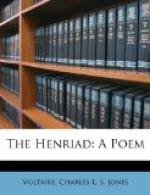|
This section contains 10,449 words (approx. 35 pages at 300 words per page) |

|
SOURCE: "Prince Hal's Falstaff: Positioning Psychoanalysis and the Female Reproductive Body," in Shakespeare Quarterly, Vol. 40, No. 4, Winter, 1989, pp. 456-74.
In the following essay, Traub considers how Falstaff and Katherine of Shakespeare's Henriad "are constructed as female Others who must be repudiated or subjugated in order for Prince Hal to assume phallocentric control as King Henry V" and thus "suggest ways in which the phallocentric order might be undermined."
Despite the specific meanings we may ascribe historically to the female reproductive body, its biological potential remains irrefutable, ineffable. In our own cultural tradition the female reproductive body is simultaneously an object of terror (fears of maternal engulfment) and idealization (the Virgin Mother). A "dark continent" traversed by every infant, whence we are conceived, labored, and delivered, it exists in our pre-natal memories—before culture, language, law, before knowledge of the father, before the Law of the Father.
Psychoanalysis offers...
|
This section contains 10,449 words (approx. 35 pages at 300 words per page) |

|


